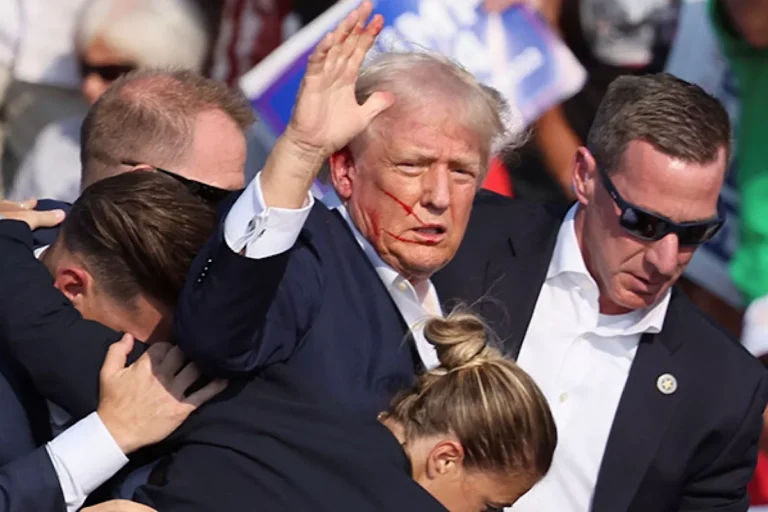Former President Donald Trump (Photo: ANI)
The shots fired at Donald Trump at a rally in Pennsylvania on Saturday are being investigated as an assassination attempt on the former president and current Republican presidential candidate. Assassination attempts on presidents and presidential candidates are scattered throughout American history, and what happened in Pennsylvania is horrifying but sadly not surprising.
I was really shocked by the number of senior US officials who said after the shooting that political violence has no place in the US. US President Joe Biden said that this kind of violence is “unprecedented” in the US. This is pretty surprising. The US is built on political violence, and political violence has characterized its entire history.
Indeed, Biden began his political career as the political successor to the assassinated Kennedy brothers, John F. Kennedy, who was assassinated in 1963, and Robert F. Kennedy, who was assassinated in 1968. However, given the volatility of the presidential campaign so far and the deep divisions in the United States, this incident at this time is extremely worrying. The fact that this shooting was so quickly weaponized on social media and the conspiracy theories developed in real time means that this type of violence is very likely to escalate. We only need to look at the attack on the U.S. Capitol on January 6, 2021 to see how quickly political violence can erupt in the United States.
This is at least in part because the far-right has cultivated violent rhetoric quite deliberately in recent years. Trump’s rallies, in particular, have been simmering with undercurrents of political violence since he first ran for president in 2016. The threat of violence is central to Trump’s political image, appeal, and base. One only needs to watch a few minutes of Trump’s rallies or speeches to see him speak with great enjoyment about violence, often in graphic detail. For example, when describing the 2022 attack on former US House Speaker Nancy Pelosi’s husband, Paul, he repeatedly refers to conspiracy theories, as well as mocking him and joking about the attack. This is a feature, not a flaw, of the Trump campaign and the movement that supports him. And it has real-world implications.
A national survey conducted by ABC News in 2020 identified 54 criminal cases in which President Trump himself was cited “directly related to acts of violence, threats of violence, or allegations of assault.” Just a few weeks ago, Kevin Roberts, president of the right-wing think tank Heritage Foundation (architect of Project 2025, a plan to reform the US government under Trump’s second term), spoke of a “second American revolution without bloodshed if the left allows it.” Given that threats of violence have become ever-present, it may be more surprising that incidents of this magnitude do not happen more often, or have not happened yet. It is also striking that Trump is a master of political imagery.
You can see it in the footage of the shooting in Pennsylvania. Trump stands up and then pumps his fist for a photo. Of course, the footage will define this moment, if not Trump’s entire presidential campaign. There have been a series of turning points in the campaign so far, but this one could very well be the defining one. It could turn Trump from a martyr to a saint in the eyes of his supporters. It will be very important to watch how Trump, his campaign, and those around him use this narrative, especially ahead of the Republican National Convention, which is scheduled to begin in Wisconsin in a few days. We are already seeing right-wing forces, especially among Trump’s supporters, trying to use the assassination attempt to stoke conspiracy theories that will bring the former president together.
Given the fallout from Biden’s debate performance in recent weeks, contrasting images of the two candidates may also emerge and be solidified, if not accurately reflected. The image of Trump with his bloodied fist raised will no doubt frame and rally support for his entire campaign. This could well be the moment Trump wins the election.
(The author is a non-resident senior research fellow in the School of Global, Urban and Social Studies at RMIT University. This article was originally published on www.theconversation.com

